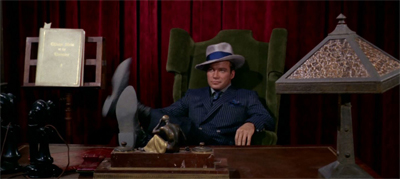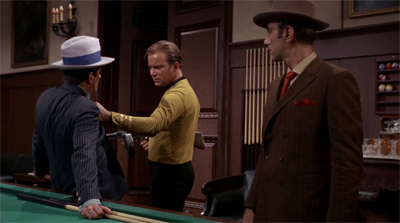Once again, Star Trek: Voyager takes its cues from Star Trek: The Next Generation.
The Next Generation bridged its sixth and seventh seasons with Descent, Part I and Descent, Part II. That season-bridging two-parter was focused on discord within the Borg Collective, with the crew coming into contact with a group of drones that had separated themselves from the hive mind. It was a somewhat underwhelming two-parter, and is unlikely to rank alongside anybody’s favourite episodes (or even favourite two-parter) from the run of The Next Generation.

Things come to a head.
Even then, Descent, Part I and Descent, Part II had a lot of weight behind them. Glossing over the quality of the episodes themselves, they marked the big reintroduction of the Borg into The Next Generation following their appearance in The Best of Both Worlds, Part I and The Best of Both Worlds, Part II. The only episode to feature the Borg in the three years between those two-parters was I, Borg, meaning that the return of the Borg at the end of the sixth season of The Next Generation was a big deal.
As such, this seems like a strange cue for Voyager to take from The Next Generation. After all, Voyager doesn’t have that same luxury of built-in anticipation. Voyager bridged its own third and fourth seasons with Scorpion, Part I and Scorpion, Part II, but the Borg have been a steady fixture of the series since then. Ignoring the addition of characters like Seven of Nine and Icheb to the core cast, the Borg have played important roles in episodes like Hope and Fear, Drone, Dark Frontier, Part I, Dark Frontier, Part II, Collective and Child’s Play.

Picking their brains.
That is a lot of focus, particularly in the context of a television series like Voyager, where there is less continuity from episode to episode. Including hallucinations, dead bodies, screen images and holograms, the Borg appear in twenty-three episodes of Voyager, as compared to six episodes of The Next Generation. By way of contrast, the Hirogen appear in between nine and ten episodes, depending on how one counts Flesh and Blood, Part I and Flesh and Blood, Part II. The Malon only appear in four episodes.
All of this is to say that Unimatrix Zero, Part I and Unimatrix Zero, Part II feel like a rather blatant rip-off of an already underwhelming two-parter, but without the core appeal. Voyager has reached the point where the appearance of the Borg is a source of dread, but not for the reasons that it should be.

She’s had some bodywork done.
Continue reading →
Filed under: Voyager | Tagged: borg drones, borg queen, i6jy, individualism, seven of nine, star trek, star trek: the next generation, star trek: voyager, the borg, the next generation, unimatrix zero, voyager | 5 Comments »



































